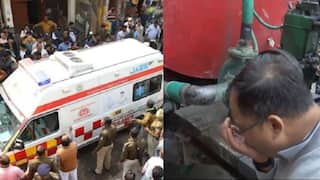World Sickle Cell Day 2023: Overcoming Challenges And Improving Care In Low-Income Regions
World Sickle Cell Day 2023: With over 20 million patients in India alone, addressing this global health issue is essential.

By Dr. Nitin Agarwal
Sickle Cell Disease (SCD) is a genetic blood disorder affecting millions worldwide, mainly in India and Sub-Saharan Africa. It causes red blood cells to have an abnormal shape, which can block blood vessels and restrict oxygen flow to essential organs. This leads to severe pain, anemia, stunted growth, and damage to various organs. With over 20 million patients in India alone, addressing this global health issue is essential.
Challenges for Low-Income Families
Taking early, cost-effective measures can significantly improve the outlook for children with SCD, but implementing these measures in low-income areas is difficult. In developed countries, strategies like screening newborns, providing preventive antibiotics, vaccinations, and education have reduced childhood deaths from SCD. Sadly, these life-saving measures are not widely available in countries like India, where 50-80 percent of children with SCD struggle to reach age five.
The Potential of Newborn Screening
To effectively combat SCD, we must provide comprehensive care for affected infants and offer genetic counseling to at-risk couples to prevent the birth of affected babies. By implementing widespread newborn screening and follow-up care, it's estimated that we could save the lives of nearly 10 million children by 2050. The primary goal of newborn screening is to diagnose SCD early and immediately provide the necessary care and treatment.
Regional Variances in India
In India, the availability of follow-up strategies like preventive antibiotics, vaccinations, and comprehensive care for SCD patients varies across different regions. To ensure that everyone receives the same level of care, we need standardized protocols and guidelines that are followed throughout the country. Additionally, it's vital to provide all SCD patients with access to safe blood transfusions and pain relief. Unfortunately, many patients lack access to reliable blood supplies, which hampers their treatment options.
Importance of Stem Cell Transplant
Treatment of sickle cell focuses on preventing and treating complications associated with the disease. People with Sickle Cell Anaemia need regular life-long blood transfusions. However, a stem cell transplant offers the best chance of survival and cure. This transplant can come from a family member. However, there is only a 30% chance of finding an HLA-matched donor in the family. The remaining 70% of patients seek a matching donor through a stem cell registry or donor center ― a database of voluntary donors aged 18 to 55.
Ethnicity — A Key Factor While Looking For A Matching Stem Cell Donor
A stem cell transplant is successful only when the donor’s HLA type closely matches the patient’s HLA. The body’s immune system has proteins known as Human Leukocyte Antigen (HLA) to distinguish cells that belong to the body from those that do not.
In conclusion, sickle Cell Disease continues to affect millions of people worldwide. To improve the outlook for people with SCD, we must implement comprehensive care strategies, including newborn screening programmes, access to safe blood transfusions, and effective pain relief. India blends various cultures, ethnic groups, languages, and mixed marriages. This has resulted in a unique gene pool and HLA frequency pattern. Since Sickle Cell Disease is more prevalent in certain ethnic groups in India, people urgently need to register as potential blood stem cell donors with any of the stem cell registries in India. This will add to the database and increase the chances of finding a donor from various ethnic groups for a patient.
Standardising protocols and guidelines across regions within countries like India will ensure that everyone with SCD receives the same quality of care. By facing these challenges head-on, raising awareness, and investing in healthcare infrastructure, we can provide a brighter future for those living with Sickle Cell Disease.
The author is MD Transfusion Medicine, HOD, Donor Request Management, DKMS BMST Foundation India.
[Disclaimer: The opinions, beliefs, and views expressed by the various authors and forum participants on this website are personal and do not reflect the opinions, beliefs, and views of ABP News Network Pvt Ltd.]
Check out below Health Tools-
Calculate Your Body Mass Index ( BMI )
Calculate The Age Through Age Calculator





































